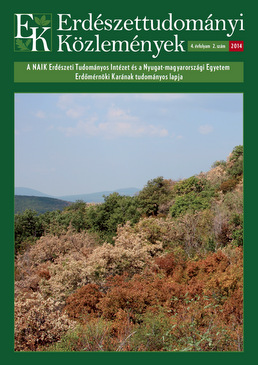Estimation of increment decline caused by climate change, based on data of a beech provenance trial
Anikó Horváth & Csaba Mátyás
Correspondence
Correspondence: Mátyás Csaba
Postal address: H-9400 Sopron, Bajcsy-Zsilinszky u. 4.
e-mail: cm[at]emk.nyme.hu
Abstract
Out of the 1998 series of the international beech provenance trials, one experiment was established in Bucsuta, SW Hungary. The site is close to the low-elevation, xeric distributional limit of the species. The climatic conditions are the most extreme compared with other experiments. Bucsuta is therefore the most suitable site to model responses of populations to sudden climatic changes, simulated by transfer. Plot averages of 15-year diameter, measured on the 5 largest trees per plot were analyzed. Out of the climatic variables, the ones determined by summer temperatures (Tmax, TQW) and drought conditions (DMI, EQ) were significant. Not surprisingly, Ellenberg’s drought index has shown the best correlation and was selected for the characterization of ecodistance. The climatic distance between the provenance origin and the test site, and the 15-year diameter data were used to establish a linear transfer function of high significance (p=0.0006). The regression (Fig. 3) indicates a monotonous decline which has no maximum value at “0” ecodistance, and may be used for the estimation of growth decline caused by changing climatic conditions.
Keywords: common garden, Ellenberg’s climate quotient, xeric limit, adaptation, genetic variability
Open Acces
For non-commercial purposes, let others distribute and copy the article, and include in a collective work, as long as they cite the author(s) and the journal, and provided they do not alter or modify the article.
Cite this article as:
Horváth, A. & Mátyás, Cs. (2014): Estimation of increment decline caused by climate change, based on data of a beech provenance trial. Bulletin of Forestry Science, 4(2): 91-99. (in Hungarian)
Volume 4, Issue 2
Pages: 91-99
First published:
6 October 2014
Related content
12
More articles
by this authors
5
Related content in the Bulletin of Forestry Science*
More articles by this authors in the Bulletin of Forestry Science
* Automatically generated recommendations based on the occurrence of keywords given by authors in the titles and abstracts of other articles. For more detailed search please use the manual search.
